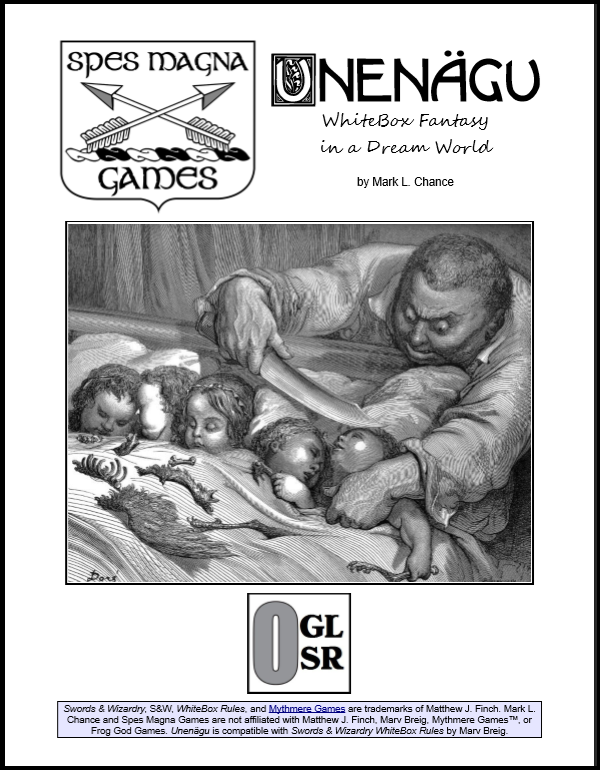W Is for What’s Next?
Well, I think I’m done blogging about The Boogie Knights of the Round Table (BKotRT) for now. I’ve got some vague ideas (which could’ve worked for yesterday’s post, what with hindsight and all that), but I’ve got the big picture down on virtual paper.
I can soon start to cut-and-paste, revise-and-edit, and format into an acceptable BKotRT PDF. That’ll take some time, and I’ll want to get some playtesting done as well. The school year is coming to an end in about a month, and I’m not teaching summer school this year, so with luck I’ll have the time and motivation to get some serious writing done.
I’m also considering finally pulling the trigger on another OSR idea I’ve had kicking around my brain for some time. That explains the charming possible cover depicted to the right.

Unenägu, at least right now in my mind, combines the Brothers Grimm (the storytellers, not the movie), Charles Perrault, the Dungeons & Dragons cartoon, and elements of horror films like The Babadook to create a world of dark fantasy in the heroes are talking animals, children from our world yanked into another realm, and more standard character types such as clerics, fighters, and magic-users. If possible, I’d like to have a working draft of Unenägu before I go back to in August.
Also, I’m thinking I should collect some of the maps I’ve drawn into a document and upload that to DriveThruRPG. Response to my maps when I’ve posted them on the Interwebz has been pretty positive. Draw up a few more, format them into a PDF, and it might be worth putting out for people to download. We shall see.

